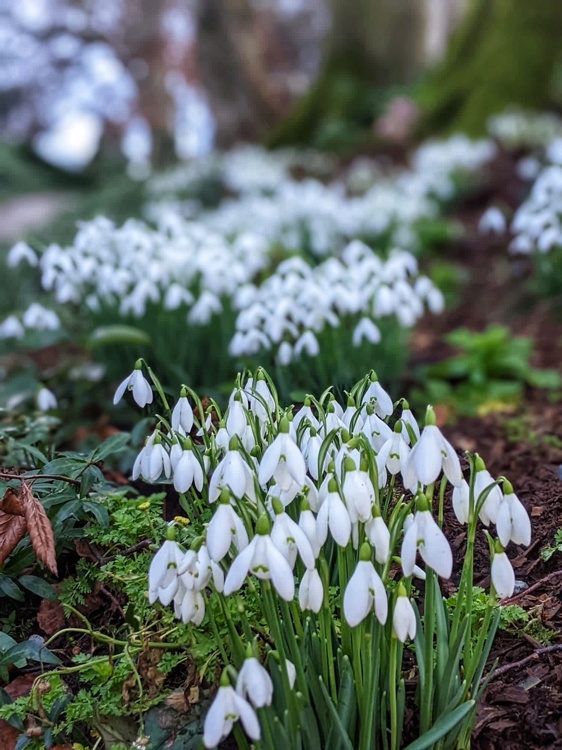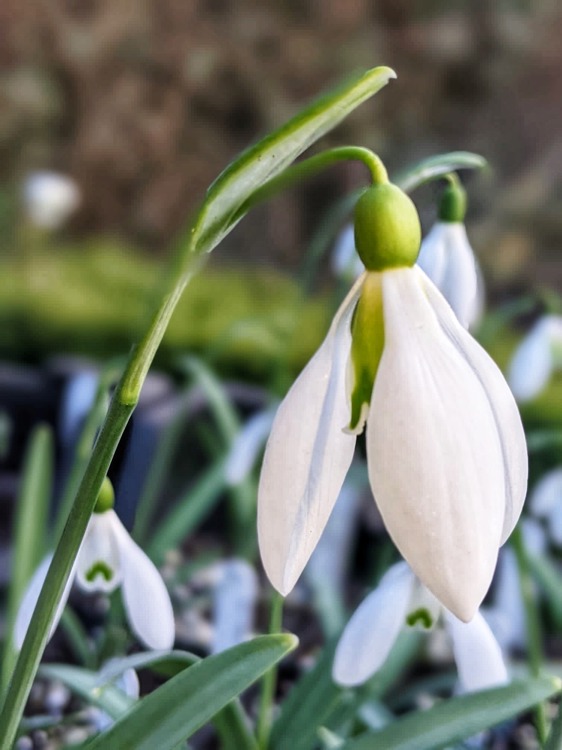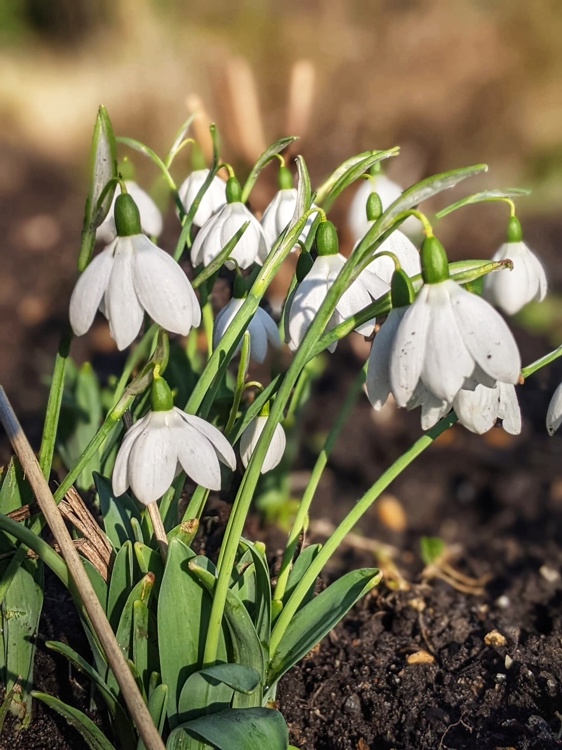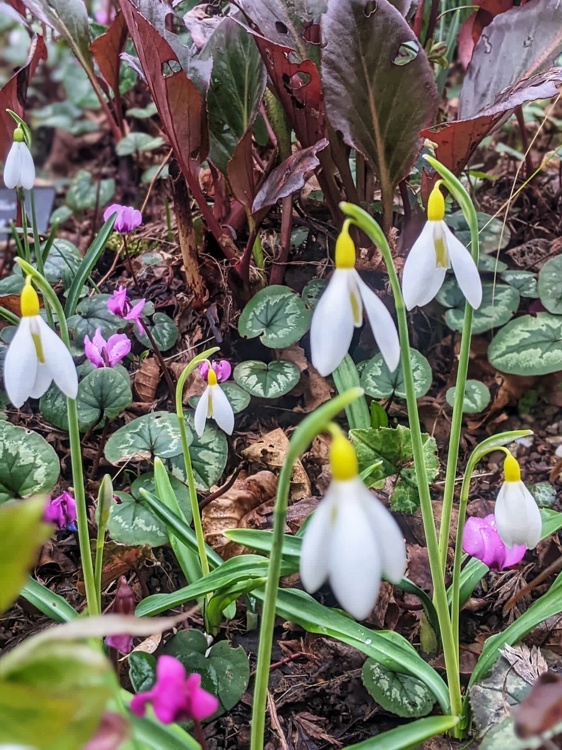Snowdrop identification – the basics
January 2023

There is something unique about the joy of when the snowdrops start flowering. Just when you start to think that it has been cold and dark and muddy forever, these defiant little bulbs push their heads up and bloom with such charm, promising that spring will soon come. They are among the most elegant of all flowers and yet are exceptionally tough, flopping down in the morning -6 frost only to perk up to their full glory again by lunchtime. Although often thought of as a native, all snowdrops growing in the UK have been introduced at some point or other. Their natural distribution is from the Pyrenees in the West to the Caucasus and Iran in the East and South as far as Lebanon and the Peloponnese. The Northern limit of their distribution is difficult to say because people have cultivated them for so long and today no temperate garden in the world would be complete without them.
There are about 18 species in the genus Galanthus although only about 4 or 5 are commonly grown in gardens. At first glance they can all look the same but on closer inspection their diversity and individual beauty can become a lifelong fascination.
The first at Gravetye to flower is Galanthus elwesii, usually starting around New Year’s Day. This is easy to identify by its broad greyish green leaves that wrap around each other at the base. Some specimens can get enormous and when their large flowers open and bask in the winter sun it is impossible to walk past without smiling. This is one of the earliest flowering species, some selections flowering in November. There is also a species called G. reginae-olgae that will flower in October but is tricky to grow, needing warmth, good drainage and shade all at the perfect moment for success. Sadly I killed it a few years ago but will try again this year.
Slightly later to flower are G. nivalis and G. plicatus. Both hold their leaves flat together at the base, like hands in prayer. If the leaves are wider than your little finger nail then it is most likely is G. plicatus. This is one of the finest garden snowdrops and displays great diversity in form. Originating from N.W. Turkey, Romania, and Crimea it has long been in cultivation in England but became popular after the Crimean War. The cultivar ‘Warham’ is said to be one of the originals brought back by soldiers after the fighting.
If the leaves are narrower than your little finger nail and held flat together at the base then you have G. nivalis the commonest and most vigorous of all the snowdrops. Although nearly all snowdrops are happiest in woodland conditions this species will colonise in meadows and is excellent amongst garden shrubs and perennials. To add to the fun we also have G. woronowii with its glossy grass green like leaves and all these species will hybridise in a garden, creating a beautiful muddle.
But the more you look at these stunning bulbs the more they reveal their beauty and the next few weeks, as the snowdrops approach their peak, has become one of the highlights of the gardening year for me.
Text and images by Tom Coward, Head Gardener




